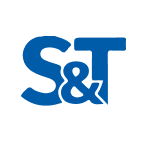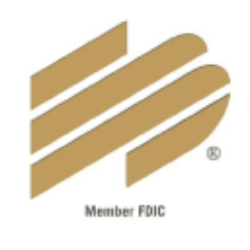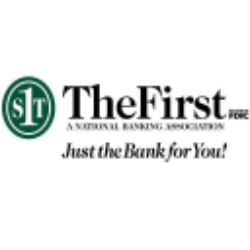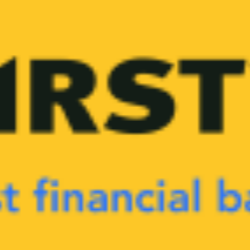FBP
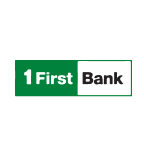
First BanCorp.
FBP
(2.8)18,63 USD
1.65% ROA
19.61% ROE
10.65x PER
3.288.790.620,00 USD
44.37% DER
3.09% Yield
26.55% NPM
First BanCorp. Stock Analysis
First BanCorp. Fundamental Analysis
Fundamental analysis in stock investing is like studying the foundation of a house before buying it. It involves looking at a company's financial health, like its earnings, assets, and debts, to determine if it's a good investment based on its fundamental strength and potential for growth.
| # | Analysis | Rating |
|---|---|---|
| 1 |
ROE
ROE surpassing expectations (15.8%) highlights strong profitability and efficient use of shareholders' equity, making it an appealing investment prospect. |
|
| 2 |
DER
The stock has a low debt to equity ratio (0%), which means it has a small amount of debt compared to the ownership it holds |
|
| 3 |
Dividend Growth
The company's dividend growth has consistently increased every year in the last five years, indicating a strong track record of positive returns for investors. |
|
| 4 |
Dividend
With a solid track record of dividend payments over the past five years, the company has established itself as a dependable choice for investors seeking consistent income. |
|
| 5 |
ROA
The stock's ROA (1.16%) shows that it's doing a pretty good job at making money from its assets, making it a solid choice to invest and earn steady profits. |
|
| 6 |
PBV
The stock's PBV ratio (2.06x) reflects a fair valuation, making it an attractive option for investors seeking balanced opportunities. |
|
| 7 |
Buffet Intrinsic Value
Warren Buffett's formula suggests that the company's stock is undervalued (39), making it an appealing investment prospect with its intrinsic value surpassing the current market price. |
|
| 8 |
Revenue Growth
Regrettably, this company's revenue has shown no signs of growth over the past three years, suggesting limited potential for returns and making it a less appealing choice. |
|
| 9 |
Net Profit Growth
Throughout the last five years, this company's net profit has remained unchanged, indicating a lack of growth and making it a less favorable investment option. |
|
| 10 |
Assets Growth
Company's revenue has remained stagnant over the past three years, indicating a lack of growth and making it a less favorable option. |
|
| 11 |
Graham Number
The company's Graham number suggests that its stock price is overestimated, implying that it may not be a promising investment opportunity. |
First BanCorp. Technical Analysis
Technical analysis in stock investing is like reading the patterns on a weather map to predict future weather conditions. It involves studying past stock price movements and trading volumes to make predictions about where a stock's price might go next, without necessarily looking at the company's financial health.
| # | Analysis | Recommendation |
|---|---|---|
| 1 | Awesome Oscillator | Buy |
| 2 | MACD | Buy |
| 3 | RSI | Hold |
| 4 | Stoch RSI | Hold |
First BanCorp. Price Chart
Financial Statements
Financial statements are like report cards for companies. They show how much money a company makes (income statement), what it owns and owes (balance sheet), and where it spends its money (cash flow statement), helping stock investors understand if a company is healthy and worth investing in.
Income Statements
An income statement for a company is like a scoreboard for its profits and losses. It shows how much money the company made (revenue) and how much it spent to make that money (expenses), helping stock investors see if a company is making a profit or not.
Revenue in stock investing is the total amount of money a company earns from its sales, and it's a key factor that investors consider to assess a company's financial performance and growth potential.
| Year | Revenue | Growth |
|---|---|---|
| 1988 | 0 | |
| 1989 | 0 | 0% |
| 1990 | 72.100.000 | 100% |
| 1991 | 80.700.000 | 10.66% |
| 1992 | 86.600.000 | 6.81% |
| 1993 | 104.100.000 | 16.81% |
| 1994 | 121.800.000 | 14.53% |
| 1995 | 159.900.000 | 23.83% |
| 1996 | 173.100.000 | 7.63% |
| 1997 | 194.600.000 | 11.05% |
| 1998 | 224.400.000 | 13.28% |
| 1999 | 218.595.789 | -2.66% |
| 2000 | 240.804.915 | 9.22% |
| 2001 | 289.035.000 | 16.69% |
| 2002 | 325.341.641 | 11.16% |
| 2003 | 410.919.803 | 20.83% |
| 2004 | 454.039.466 | 9.5% |
| 2005 | 495.395.788 | 8.35% |
| 2006 | 493.864.229 | -0.31% |
| 2007 | 503.326.000 | 1.88% |
| 2008 | 602.524.000 | 16.46% |
| 2009 | 661.306.000 | 8.89% |
| 2010 | 579.578.000 | -14.1% |
| 2011 | 516.555.000 | -12.2% |
| 2012 | 452.640.000 | -14.12% |
| 2013 | 491.739.000 | 7.95% |
| 2014 | 526.973.000 | 6.69% |
| 2015 | 525.339.000 | -0.31% |
| 2016 | 531.402.000 | 1.14% |
| 2017 | 523.016.000 | -1.6% |
| 2018 | 577.413.000 | 9.42% |
| 2019 | 647.738.000 | 10.86% |
| 2020 | 698.641.000 | 7.29% |
| 2021 | 835.861.000 | 16.42% |
| 2022 | 23.573.000 | -3445.84% |
| 2023 | 926.068.000 | 97.45% |
| 2023 | 863.268.000 | -7.27% |
| 2024 | 1.224.836.000 | 29.52% |
Research and Development Expenses are the costs a company incurs to create and improve its products or services, which can be important for investors to evaluate a company's innovation and potential for future growth.
| Year | Research and Development Expenses | Growth |
|---|---|---|
| 1988 | 0 | |
| 1989 | 0 | 0% |
| 1990 | 0 | 0% |
| 1991 | 0 | 0% |
| 1992 | 0 | 0% |
| 1993 | 0 | 0% |
| 1994 | 0 | 0% |
| 1995 | 0 | 0% |
| 1996 | 0 | 0% |
| 1997 | 0 | 0% |
| 1998 | 0 | 0% |
| 1999 | 0 | 0% |
| 2000 | 0 | 0% |
| 2001 | 0 | 0% |
| 2002 | 0 | 0% |
| 2003 | 0 | 0% |
| 2004 | 0 | 0% |
| 2005 | 0 | 0% |
| 2006 | 0 | 0% |
| 2007 | 0 | 0% |
| 2008 | 0 | 0% |
| 2009 | 0 | 0% |
| 2010 | 0 | 0% |
| 2011 | 0 | 0% |
| 2012 | 0 | 0% |
| 2013 | 0 | 0% |
| 2014 | 0 | 0% |
| 2015 | 0 | 0% |
| 2016 | 0 | 0% |
| 2017 | 0 | 0% |
| 2018 | 0 | 0% |
| 2019 | 0 | 0% |
| 2020 | 0 | 0% |
| 2021 | 0 | 0% |
| 2022 | 0 | 0% |
| 2023 | 0 | 0% |
| 2023 | 0 | 0% |
| 2024 | 0 | 0% |
General and Administrative Expenses are the costs a company incurs to run its day-to-day operations, such as office rent, salaries, and utilities, which investors consider to understand a company's overall efficiency and management effectiveness.
| Year | General and Administrative Expenses | Growth |
|---|---|---|
| 1988 | 0 | |
| 1989 | 0 | 0% |
| 1990 | 23.400.000 | 100% |
| 1991 | 21.000.000 | -11.43% |
| 1992 | 23.800.000 | 11.76% |
| 1993 | 25.700.000 | 7.39% |
| 1994 | 27.500.000 | 6.55% |
| 1995 | 28.900.000 | 4.84% |
| 1996 | 37.400.000 | 22.73% |
| 1997 | 38.600.000 | 3.11% |
| 1998 | 43.200.000 | 10.65% |
| 1999 | 48.545.839 | 11.01% |
| 2000 | 50.014.110 | 2.94% |
| 2001 | 54.703.000 | 8.57% |
| 2002 | 59.432.111 | 7.96% |
| 2003 | 75.213.081 | 20.98% |
| 2004 | 83.528.174 | 9.95% |
| 2005 | 102.077.927 | 18.17% |
| 2006 | 127.523.015 | 19.95% |
| 2007 | 140.363.000 | 9.15% |
| 2008 | 141.853.000 | 1.05% |
| 2009 | 194.186.000 | 26.95% |
| 2010 | 202.628.000 | 4.17% |
| 2011 | 189.793.000 | -6.76% |
| 2012 | 125.610.000 | -51.1% |
| 2013 | 130.969.000 | 4.09% |
| 2014 | 135.422.000 | 3.29% |
| 2015 | 150.059.000 | 9.75% |
| 2016 | 151.493.000 | 0.95% |
| 2017 | 151.845.000 | 0.23% |
| 2018 | 159.494.000 | 4.8% |
| 2019 | 162.374.000 | 1.77% |
| 2020 | 175.912.000 | 7.7% |
| 2021 | 209.844.000 | 16.17% |
| 2022 | 206.038.000 | -1.85% |
| 2023 | 234.712.000 | 12.22% |
| 2023 | 238.010.000 | 1.39% |
| 2024 | 239.088.000 | 0.45% |
EBITDA stands for Earnings Before Interest, Taxes, Depreciation, and Amortization. It is a measure that helps stock investors analyze a company's profitability by looking at its earnings without considering certain expenses. This helps to get a clearer picture of the company's financial performance and its ability to generate cash flow.
| Year | EBITDA | Growth |
|---|---|---|
| 1988 | 12.500.000 | |
| 1989 | 11.700.000 | -6.84% |
| 1990 | 0 | 0% |
| 1991 | 0 | 0% |
| 1992 | 0 | 0% |
| 1993 | 0 | 0% |
| 1994 | 0 | 0% |
| 1995 | 0 | 0% |
| 1996 | 0 | 0% |
| 1997 | 0 | 0% |
| 1998 | 0 | 0% |
| 1999 | 0 | 0% |
| 2000 | 0 | 0% |
| 2001 | 0 | 0% |
| 2002 | 0 | 0% |
| 2003 | 0 | 0% |
| 2004 | 253.835.167 | 100% |
| 2005 | 0 | 0% |
| 2006 | 0 | 0% |
| 2007 | 0 | 0% |
| 2008 | 0 | 0% |
| 2009 | 0 | 0% |
| 2010 | 0 | 0% |
| 2011 | 0 | 0% |
| 2012 | 0 | 0% |
| 2013 | 0 | 0% |
| 2014 | 0 | 0% |
| 2015 | 0 | 0% |
| 2016 | 0 | 0% |
| 2017 | 0 | 0% |
| 2018 | 209.257.000 | 100% |
| 2019 | 260.050.000 | 19.53% |
| 2020 | 142.088.000 | -83.02% |
| 2021 | 464.189.000 | 69.39% |
| 2022 | 478.689.000 | 3.03% |
| 2023 | 464.224.000 | -3.12% |
| 2023 | 425.672.000 | -9.06% |
| 2024 | 5.172.000 | -8130.32% |
Gross profit is the money a company makes from selling its products or services after subtracting the cost of producing or providing them, and it is an important measure for investors to understand a company's profitability.
| Year | Gross Profit | Growth |
|---|---|---|
| 1988 | 0 | |
| 1989 | 0 | 0% |
| 1990 | 72.100.000 | 100% |
| 1991 | 80.700.000 | 10.66% |
| 1992 | 86.600.000 | 6.81% |
| 1993 | 104.100.000 | 16.81% |
| 1994 | 121.800.000 | 14.53% |
| 1995 | 159.900.000 | 23.83% |
| 1996 | 173.100.000 | 7.63% |
| 1997 | 194.600.000 | 11.05% |
| 1998 | 224.400.000 | 13.28% |
| 1999 | 218.595.789 | -2.66% |
| 2000 | 240.804.915 | 9.22% |
| 2001 | 289.035.000 | 16.69% |
| 2002 | 325.341.641 | 11.16% |
| 2003 | 410.919.803 | 20.83% |
| 2004 | 454.039.466 | 9.5% |
| 2005 | -184.462.910.212 | 100.25% |
| 2006 | -36.243.674.771 | -408.95% |
| 2007 | 503.326.000 | 7300.83% |
| 2008 | 602.524.000 | 16.46% |
| 2009 | 661.306.000 | 8.89% |
| 2010 | 579.578.000 | -14.1% |
| 2011 | 516.555.000 | -12.2% |
| 2012 | 452.640.000 | -14.12% |
| 2013 | 491.739.000 | 7.95% |
| 2014 | 526.973.000 | 6.69% |
| 2015 | 525.339.000 | -0.31% |
| 2016 | 531.402.000 | 1.14% |
| 2017 | 523.016.000 | -1.6% |
| 2018 | 577.413.000 | 9.42% |
| 2019 | 647.738.000 | 10.86% |
| 2020 | 698.641.000 | 7.29% |
| 2021 | 835.861.000 | 16.42% |
| 2022 | 23.573.000 | -3445.84% |
| 2023 | 926.068.000 | 97.45% |
| 2023 | 863.268.000 | -7.27% |
| 2024 | 121.420.000 | -610.98% |
Net income in stock investing is like the money a company actually gets to keep as profit after paying all its bills, and it's an important measure to understand how well a company is doing financially.
| Year | Net Profit | Growth |
|---|---|---|
| 1988 | 12.500.000 | |
| 1989 | 11.700.000 | -6.84% |
| 1990 | -17.700.000 | 166.1% |
| 1991 | 10.100.000 | 275.25% |
| 1992 | 14.400.000 | 29.86% |
| 1993 | 28.800.000 | 50% |
| 1994 | 30.600.000 | 5.88% |
| 1995 | 49.100.000 | 37.68% |
| 1996 | 37.600.000 | -30.59% |
| 1997 | 47.500.000 | 20.84% |
| 1998 | 51.800.000 | 8.3% |
| 1999 | 62.074.949 | 16.55% |
| 2000 | 67.275.609 | 7.73% |
| 2001 | 86.001.000 | 21.77% |
| 2002 | 107.956.351 | 20.34% |
| 2003 | 152.338.342 | 29.13% |
| 2004 | 178.877.788 | 14.84% |
| 2005 | 114.604.084 | -56.08% |
| 2006 | 84.634.260 | -35.41% |
| 2007 | 68.136.000 | -24.21% |
| 2008 | 109.937.000 | 38.02% |
| 2009 | -322.075.000 | 134.13% |
| 2010 | -430.604.000 | 25.2% |
| 2011 | -82.232.000 | -423.65% |
| 2012 | 29.782.000 | 376.11% |
| 2013 | -164.487.000 | 118.11% |
| 2014 | 392.287.000 | 141.93% |
| 2015 | 21.297.000 | -1741.98% |
| 2016 | 93.229.000 | 77.16% |
| 2017 | 66.956.000 | -39.24% |
| 2018 | 201.608.000 | 66.79% |
| 2019 | 167.377.000 | -20.45% |
| 2020 | 102.273.000 | -63.66% |
| 2021 | 281.025.000 | 63.61% |
| 2022 | 305.072.000 | 7.88% |
| 2023 | 328.088.000 | 7.02% |
| 2023 | 302.864.000 | -8.33% |
| 2024 | 303.352.000 | 0.16% |
EPS, or earnings per share, is a measure that shows how much profit a company has earned for each outstanding share of its stock, and it is important for stock investors as it helps understand the profitability of a company and compare it with other companies in the market.
| Year | Earning per Share (EPS) | Growth |
|---|---|---|
| 1988 | 2 | |
| 1989 | 2 | 0% |
| 1990 | -3 | 166.67% |
| 1991 | 0 | 0% |
| 1992 | 0 | 0% |
| 1993 | 0 | 0% |
| 1994 | 1 | 0% |
| 1995 | 1 | 100% |
| 1996 | 1 | 0% |
| 1997 | 1 | 0% |
| 1998 | 9 | 87.5% |
| 1999 | 10 | 20% |
| 2000 | 4 | -233.33% |
| 2001 | 4 | 0% |
| 2002 | 10 | 70% |
| 2003 | 8 | -25% |
| 2004 | 13 | 33.33% |
| 2005 | 14 | 7.69% |
| 2006 | 8 | -62.5% |
| 2007 | 5 | -100% |
| 2008 | 11 | 63.64% |
| 2009 | -52 | 121.15% |
| 2010 | -38 | -36.84% |
| 2011 | -1 | -3700% |
| 2012 | 0 | 0% |
| 2013 | -1 | 0% |
| 2014 | 2 | 100% |
| 2015 | 0 | 0% |
| 2016 | 0 | 0% |
| 2017 | 0 | 0% |
| 2018 | 1 | 0% |
| 2019 | 1 | 0% |
| 2020 | 0 | 0% |
| 2021 | 1 | 100% |
| 2022 | 2 | 0% |
| 2023 | 2 | 0% |
| 2023 | 2 | 0% |
| 2024 | 2 | 0% |
Cashflow Statements
Cashflow statements show the movement of money in and out of a company, helping stock investors understand how much money a company makes and spends. By examining cashflow statements, investors can assess if a company is generating enough cash to pay its bills, invest in growth, and provide returns to stockholders.
Free cash flow is the leftover cash that a company generates after covering its operating expenses and capital expenditures, which is important for stock investors as it shows how much money a company has available to invest in growth, pay dividends, or reduce debt.
| Year | Free Cashflow | Growth |
|---|---|---|
| 1990 | 9.100.000 | |
| 1991 | 27.700.000 | 67.15% |
| 1992 | -32.600.000 | 184.97% |
| 1993 | 51.900.000 | 162.81% |
| 1994 | -122.600.000 | 142.33% |
| 1995 | 200.000.000 | 161.3% |
| 1996 | 52.300.000 | -282.41% |
| 1997 | 78.800.000 | 33.63% |
| 1998 | 84.600.000 | 6.86% |
| 1999 | 97.095.395 | 12.87% |
| 2000 | 98.918.433 | 1.84% |
| 2001 | 143.469.000 | 31.05% |
| 2002 | 176.981.965 | 18.94% |
| 2003 | 120.499.261 | -46.87% |
| 2004 | 160.915.134 | 25.12% |
| 2005 | 338.047.538 | 52.4% |
| 2006 | 166.188.064 | -103.41% |
| 2007 | 35.651.000 | -366.15% |
| 2008 | 143.084.000 | 75.08% |
| 2009 | 202.978.000 | 29.51% |
| 2010 | 205.179.000 | 1.07% |
| 2011 | 143.547.000 | -42.94% |
| 2012 | 216.915.000 | 33.82% |
| 2013 | 329.896.000 | 34.25% |
| 2014 | 242.091.000 | -36.27% |
| 2015 | 249.435.000 | 2.94% |
| 2016 | 189.062.000 | -31.93% |
| 2017 | 226.547.000 | 16.55% |
| 2018 | 267.809.000 | 15.41% |
| 2019 | 271.806.000 | 1.47% |
| 2020 | 281.668.000 | 3.5% |
| 2021 | 386.372.000 | 27.1% |
| 2022 | 420.026.000 | 8.01% |
| 2023 | 113.540.000 | -269.94% |
| 2023 | 337.936.000 | 66.4% |
| 2024 | 67.807.000 | -398.38% |
Operating cash flow represents the cash generated or consumed by a company's day-to-day operations, excluding external investing or financing activities, and is crucial for stock investors as it shows how much cash a company is generating from its core business operations.
| Year | Operating Cashflow | Growth |
|---|---|---|
| 1990 | 13.500.000 | |
| 1991 | 29.700.000 | 54.55% |
| 1992 | -27.700.000 | 207.22% |
| 1993 | 59.700.000 | 146.4% |
| 1994 | -114.000.000 | 152.37% |
| 1995 | 212.600.000 | 153.62% |
| 1996 | 68.500.000 | -210.36% |
| 1997 | 85.500.000 | 19.88% |
| 1998 | 95.500.000 | 10.47% |
| 1999 | 115.151.055 | 17.07% |
| 2000 | 118.072.030 | 2.47% |
| 2001 | 157.382.000 | 24.98% |
| 2002 | 191.394.282 | 17.77% |
| 2003 | 131.934.425 | -45.07% |
| 2004 | 185.398.646 | 28.84% |
| 2005 | 366.968.522 | 49.48% |
| 2006 | 221.712.032 | -65.52% |
| 2007 | 60.293.000 | -267.72% |
| 2008 | 175.914.000 | 65.73% |
| 2009 | 243.249.000 | 27.68% |
| 2010 | 237.170.000 | -2.56% |
| 2011 | 156.923.000 | -51.14% |
| 2012 | 228.852.000 | 31.43% |
| 2013 | 341.685.000 | 33.02% |
| 2014 | 264.353.000 | -29.25% |
| 2015 | 261.891.000 | -0.94% |
| 2016 | 199.432.000 | -31.32% |
| 2017 | 235.964.000 | 15.48% |
| 2018 | 288.323.000 | 18.16% |
| 2019 | 294.284.000 | 2.03% |
| 2020 | 297.738.000 | 1.16% |
| 2021 | 399.721.000 | 25.51% |
| 2022 | 440.485.000 | 9.25% |
| 2023 | 117.267.000 | -275.63% |
| 2023 | 360.535.000 | 67.47% |
| 2024 | 69.524.000 | -418.58% |
Capex, short for capital expenditures, refers to the money a company spends on acquiring or upgrading tangible assets like buildings, equipment, or technology, which is important for stock investors as it indicates how much a company is investing in its infrastructure to support future growth and profitability.
| Year | Capital Expenditure | Growth |
|---|---|---|
| 1990 | 4.400.000 | |
| 1991 | 2.000.000 | -120% |
| 1992 | 4.900.000 | 59.18% |
| 1993 | 7.800.000 | 37.18% |
| 1994 | 8.600.000 | 9.3% |
| 1995 | 12.600.000 | 31.75% |
| 1996 | 16.200.000 | 22.22% |
| 1997 | 6.700.000 | -141.79% |
| 1998 | 10.900.000 | 38.53% |
| 1999 | 18.055.660 | 39.63% |
| 2000 | 19.153.597 | 5.73% |
| 2001 | 13.913.000 | -37.67% |
| 2002 | 14.412.317 | 3.46% |
| 2003 | 11.435.164 | -26.04% |
| 2004 | 24.483.512 | 53.29% |
| 2005 | 28.920.984 | 15.34% |
| 2006 | 55.523.968 | 47.91% |
| 2007 | 24.642.000 | -125.32% |
| 2008 | 32.830.000 | 24.94% |
| 2009 | 40.271.000 | 18.48% |
| 2010 | 31.991.000 | -25.88% |
| 2011 | 13.376.000 | -139.17% |
| 2012 | 11.937.000 | -12.05% |
| 2013 | 11.789.000 | -1.26% |
| 2014 | 22.262.000 | 47.04% |
| 2015 | 12.456.000 | -78.73% |
| 2016 | 10.370.000 | -20.12% |
| 2017 | 9.417.000 | -10.12% |
| 2018 | 20.514.000 | 54.09% |
| 2019 | 22.478.000 | 8.74% |
| 2020 | 16.070.000 | -39.88% |
| 2021 | 13.349.000 | -20.38% |
| 2022 | 20.459.000 | 34.75% |
| 2023 | 3.727.000 | -448.94% |
| 2023 | 22.599.000 | 83.51% |
| 2024 | 1.717.000 | -1216.19% |
Balance Sheet
Balance sheets provide a snapshot of a company's financial health and its assets (such as cash, inventory, and property) and liabilities (like debts and obligations) at a specific point in time. For stock investors, balance sheets help assess the company's overall worth and evaluate its ability to meet financial obligations and support future growth.
Equity refers to the ownership interest or stake that shareholders have in a company, representing their claim on its assets and earnings after all debts and liabilities are paid.
| Year | Equity | Growth |
|---|---|---|
| 1990 | 64.400.000 | |
| 1991 | 74.100.000 | 13.09% |
| 1992 | 88.600.000 | 16.37% |
| 1993 | 92.800.000 | 4.53% |
| 1994 | 120.000.000 | 22.67% |
| 1995 | 171.200.000 | 29.91% |
| 1996 | 191.100.000 | 10.41% |
| 1997 | 236.400.000 | 19.16% |
| 1998 | 270.400.000 | 12.57% |
| 1999 | 294.902.249 | 8.31% |
| 2000 | 434.460.549 | 32.12% |
| 2001 | 602.919.000 | 27.94% |
| 2002 | 798.424.000 | 24.49% |
| 2003 | 1.089.569.066 | 26.72% |
| 2004 | 1.222.911.314 | 10.9% |
| 2005 | 1.197.840.935 | -2.09% |
| 2006 | 1.229.553.186 | 2.58% |
| 2007 | 1.421.646.000 | 13.51% |
| 2008 | 1.548.117.000 | 8.17% |
| 2009 | 1.599.063.000 | 3.19% |
| 2010 | 1.151.663.000 | -38.85% |
| 2011 | 1.444.144.000 | 20.25% |
| 2012 | 1.485.023.000 | 2.75% |
| 2013 | 1.215.858.000 | -22.14% |
| 2014 | 1.671.743.000 | 27.27% |
| 2015 | 1.694.134.000 | 1.32% |
| 2016 | 1.786.243.000 | 5.16% |
| 2017 | 1.869.097.000 | 4.43% |
| 2018 | 2.044.704.000 | 8.59% |
| 2019 | 2.228.073.000 | 8.23% |
| 2020 | 2.275.179.000 | 2.07% |
| 2021 | 2.101.767.000 | -8.25% |
| 2022 | 1.325.540.000 | -58.56% |
| 2023 | 1.497.609.000 | 11.49% |
| 2023 | 1.303.068.000 | -14.93% |
| 2024 | 1.491.460.000 | 12.63% |
Assets represent the valuable resources that a company owns, such as cash, inventory, property, and equipment, and understanding a company's assets helps investors assess its value and potential for generating future profits.
| Year | Assets | Growth |
|---|---|---|
| 1990 | 1.908.200.000 | |
| 1991 | 1.898.400.000 | -0.52% |
| 1992 | 1.888.800.000 | -0.51% |
| 1993 | 1.913.900.000 | 1.31% |
| 1994 | 2.174.700.000 | 11.99% |
| 1995 | 2.432.800.000 | 10.61% |
| 1996 | 2.822.100.000 | 13.79% |
| 1997 | 3.327.400.000 | 15.19% |
| 1998 | 4.017.400.000 | 17.18% |
| 1999 | 4.721.568.165 | 14.91% |
| 2000 | 5.919.656.581 | 20.24% |
| 2001 | 8.197.518.000 | 27.79% |
| 2002 | 9.643.852.296 | 15% |
| 2003 | 12.667.910.369 | 23.87% |
| 2004 | 15.619.816.644 | 18.9% |
| 2005 | 19.917.650.727 | 21.58% |
| 2006 | 17.390.255.878 | -14.53% |
| 2007 | 17.186.931.000 | -1.18% |
| 2008 | 19.491.268.000 | 11.82% |
| 2009 | 19.628.448.000 | 0.7% |
| 2010 | 15.686.781.000 | -25.13% |
| 2011 | 13.127.275.000 | -19.5% |
| 2012 | 13.099.741.000 | -0.21% |
| 2013 | 12.656.925.000 | -3.5% |
| 2014 | 12.727.835.000 | 0.56% |
| 2015 | 12.573.019.000 | -1.23% |
| 2016 | 11.922.455.000 | -5.46% |
| 2017 | 12.261.268.000 | 2.76% |
| 2018 | 12.243.561.000 | -0.14% |
| 2019 | 12.611.266.000 | 2.92% |
| 2020 | 18.793.071.000 | 32.89% |
| 2021 | 20.785.275.000 | 9.58% |
| 2022 | 18.634.484.000 | -11.54% |
| 2023 | 19.058.668.000 | 2.23% |
| 2023 | 18.594.608.000 | -2.5% |
| 2024 | 18.881.374.000 | 1.52% |
Liabilities refer to the financial obligations or debts that a company owes to creditors or external parties, and understanding a company's liabilities is important for investors as it helps assess the company's financial risk and ability to meet its obligations.
| Year | Liabilities | Growth |
|---|---|---|
| 1990 | 1.843.800.000 | |
| 1991 | 1.824.300.000 | -1.07% |
| 1992 | 1.800.200.000 | -1.34% |
| 1993 | 1.821.100.000 | 1.15% |
| 1994 | 2.054.700.000 | 11.37% |
| 1995 | 2.261.600.000 | 9.15% |
| 1996 | 2.631.000.000 | 14.04% |
| 1997 | 3.091.000.000 | 14.88% |
| 1998 | 3.747.000.000 | 17.51% |
| 1999 | 4.426.665.916 | 15.35% |
| 2000 | 5.485.196.032 | 19.3% |
| 2001 | 7.594.599.000 | 27.78% |
| 2002 | 8.845.428.296 | 14.14% |
| 2003 | 11.578.341.303 | 23.6% |
| 2004 | 14.396.905.330 | 19.58% |
| 2005 | 18.719.809.792 | 23.09% |
| 2006 | 16.160.702.692 | -15.84% |
| 2007 | 15.765.285.000 | -2.51% |
| 2008 | 17.943.151.000 | 12.14% |
| 2009 | 18.029.385.000 | 0.48% |
| 2010 | 14.535.118.000 | -24.04% |
| 2011 | 11.683.131.000 | -24.41% |
| 2012 | 11.614.718.000 | -0.59% |
| 2013 | 11.441.067.000 | -1.52% |
| 2014 | 11.056.092.000 | -3.48% |
| 2015 | 10.878.885.000 | -1.63% |
| 2016 | 10.136.212.000 | -7.33% |
| 2017 | 10.392.171.000 | 2.46% |
| 2018 | 10.198.857.000 | -1.9% |
| 2019 | 10.383.193.000 | 1.78% |
| 2020 | 16.517.892.000 | 37.14% |
| 2021 | 18.683.508.000 | 11.59% |
| 2022 | 17.308.944.000 | -7.94% |
| 2023 | 17.561.059.000 | 1.44% |
| 2023 | 17.291.540.000 | -1.56% |
| 2024 | 17.389.914.000 | 0.57% |
First BanCorp. Financial Ratio (TTM)
Valuation Metrics
- Revenue per Share
- 6.92
- Net Income per Share
- 1.88
- Price to Earning Ratio
- 10.65x
- Price To Sales Ratio
- 2.88x
- POCF Ratio
- 8.56
- PFCF Ratio
- 8.78
- Price to Book Ratio
- 2.22
- EV to Sales
- 2.95
- EV Over EBITDA
- 27.43
- EV to Operating CashFlow
- 8.71
- EV to FreeCashFlow
- 8.99
- Earnings Yield
- 0.09
- FreeCashFlow Yield
- 0.11
- Market Cap
- 3,29 Bil.
- Enterprise Value
- 3,37 Bil.
- Graham Number
- 19.58
- Graham NetNet
- -73.48
Income Statement Metrics
- Net Income per Share
- 1.88
- Income Quality
- 1.24
- ROE
- 0.22
- Return On Assets
- 0.02
- Return On Capital Employed
- 0.04
- Net Income per EBT
- 0.8
- EBT Per Ebit
- 0.69
- Ebit per Revenue
- 0.48
- Effective Tax Rate
- 0.2
Margins
- Sales, General, & Administrative to Revenue
- 0.17
- Research & Developement to Revenue
- 0
- Stock Based Compensation to Revenue
- 0.01
- Gross Profit Margin
- 0.35
- Operating Profit Margin
- 0.48
- Pretax Profit Margin
- 0.33
- Net Profit Margin
- 0.27
Dividends
- Dividend Yield
- 0.03
- Dividend Yield %
- 3.09
- Payout Ratio
- 0.33
- Dividend Per Share
- 0.62
Operating Metrics
- Operating Cashflow per Share
- 2.34
- Free CashFlow per Share
- 2.27
- Capex to Operating CashFlow
- 0.03
- Capex to Revenue
- 0.01
- Capex to Depreciation
- 0.45
- Return on Invested Capital
- 0.21
- Return on Tangible Assets
- 0.02
- Days Sales Outstanding
- 24.9
- Days Payables Outstanding
- 0
- Days of Inventory on Hand
- -443.82
- Receivables Turnover
- 14.66
- Payables Turnover
- 0
- Inventory Turnover
- -0.82
- Capex per Share
- 0.07
Balance Sheet
- Cash per Share
- 33,61
- Book Value per Share
- 9,04
- Tangible Book Value per Share
- 8.75
- Shareholders Equity per Share
- 9.04
- Interest Debt per Share
- 5.33
- Debt to Equity
- 0.44
- Debt to Assets
- 0.04
- Net Debt to EBITDA
- 0.65
- Current Ratio
- 0.08
- Tangible Asset Value
- 1,44 Bil.
- Net Current Asset Value
- -16,70 Bil.
- Invested Capital
- -7611991000
- Working Capital
- -7,80 Bil.
- Intangibles to Total Assets
- 0
- Average Receivables
- 0,08 Bil.
- Average Payables
- 0,00 Bil.
- Average Inventory
- -710525000
- Debt to Market Cap
- 0.2
Dividends
Dividends in stock investing are like rewards that companies give to their shareholders. They are a portion of the company's profits distributed to investors, typically in the form of cash payments, as a way for them to share in the company's success.
| Year | Dividends | Growth |
|---|---|---|
| 1988 | 0 | |
| 1989 | 0 | 0% |
| 1992 | 2 | 100% |
| 1995 | 0 | 0% |
| 1996 | 0 | 0% |
| 1997 | 0 | 0% |
| 1998 | 1 | 0% |
| 1999 | 0 | 0% |
| 2000 | 0 | 0% |
| 2001 | 1 | 0% |
| 2002 | 1 | 0% |
| 2003 | 0 | 0% |
| 2004 | 0 | 0% |
| 2005 | 0 | 0% |
| 2006 | 0 | 0% |
| 2007 | 0 | 0% |
| 2008 | 0 | 0% |
| 2009 | 0 | 0% |
| 2018 | 0 | 0% |
| 2019 | 0 | 0% |
| 2020 | 0 | 0% |
| 2021 | 0 | 0% |
| 2022 | 0 | 0% |
| 2023 | 1 | 0% |
| 2024 | 0 | 0% |
First BanCorp. Profile
About First BanCorp.
First BanCorp. operates as a bank holding company for FirstBank Puerto Rico that provides various financial services for retail, commercial, and institutional clients. The company operates through six segments: Commercial and Corporate Banking, Mortgage Banking, Consumer (Retail) Banking, Treasury and Investments, United States Operations, and Virgin Islands Operations. The Commercial and Corporate Banking segment offers commercial loans, including commercial real estate and construction loans and floor plan financings; and other products, such as cash management and business management services. The Mortgage Banking segment engages in the origination, sale, and servicing of various residential mortgage loans; acquisition and sale of mortgages in the secondary markets; and purchase of mortgage loans from other local banks and mortgage bankers. The Consumer (Retail) Banking segment provides auto, boat, credit card, and personal loans; lines of credit; deposit products comprising interest bearing and non-interest bearing checking and savings accounts, individual retirement accounts, and retail certificates of deposit (CDs); and finance leasing and insurance agency services. The Treasury and Investments segment offers funding and liquidity management services. The United States Operations segment provides checking, savings, and money market accounts, as well as retail CDs; traditional commercial and industrial, and commercial real estate loans; and internet banking, cash management, remote deposit capture, and automated clearing house, and transactions services. The Virgin Islands Operations segment is involved in consumer, commercial lending, and deposit-taking activities. The company operates 64 branches in Puerto Rico, 8 branches in the U.S. Virgin Islands and British Virgin Islands, and 11 branches in the state of Florida. First BanCorp. was founded in 1948 and is headquartered in San Juan, Puerto Rico.
- CEO
- Mr. Aurelio Aleman-Bermudez
- Employee
- 3.168
- Address
-
1519 Ponce de Leon Ave.
San Juan, 00908-0146
First BanCorp. Executives & BODs
| # | Name | Age |
|---|---|---|
| 1 |
Mr. Ramon Rodriguez C.F.A. Senior Vice President of Corporate Strategy / Investor Relations |
70 |
| 2 |
Mr. Donald L. Kafka Executive Vice President & Chief Operating Officer |
70 |
| 3 |
Mr. Orlando Berges-González CPA Executive Vice President & Chief Financial Officer |
70 |
| 4 |
Mr. Aurelio Aleman-Bermudez President, Chief Executive Officer & Director |
70 |
| 5 |
Mr. Thomas Michael McDonald Executive Vice President & Business Group Director |
70 |
| 6 |
Mr. Cassan A. Pancham Executive Vice President & Business Group Director |
70 |
| 7 |
Ms. Sara Alvarez-Cabrero Executive Vice President, General Counsel & Secretary of the Board |
70 |
| 8 |
Ms. Nayda Rivera-Batista CPA Executive Vice President & Chief Risk Officer |
70 |
| 9 |
Mr. Said Ortiz CPA Chief Accounting Officer, Controller & Senior Vice President |
70 |
| 10 |
Ms. Ginoris Lopez-Lay Executive Vice President & Strategic Management Director |
70 |













